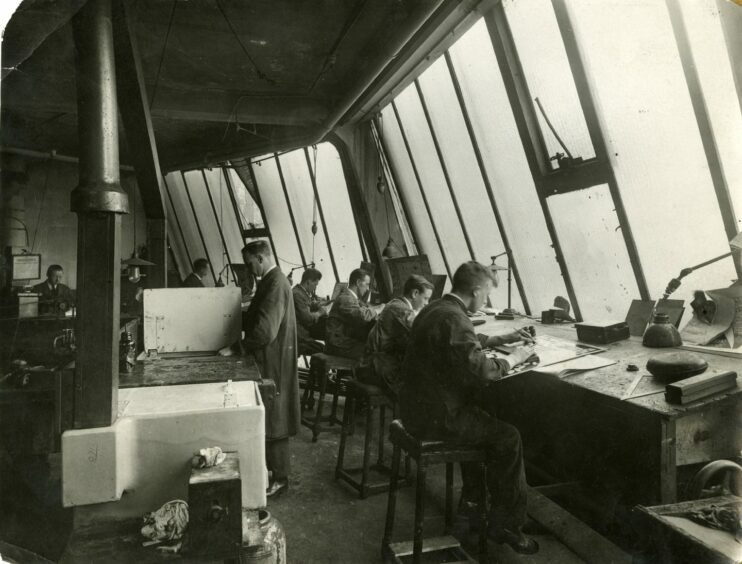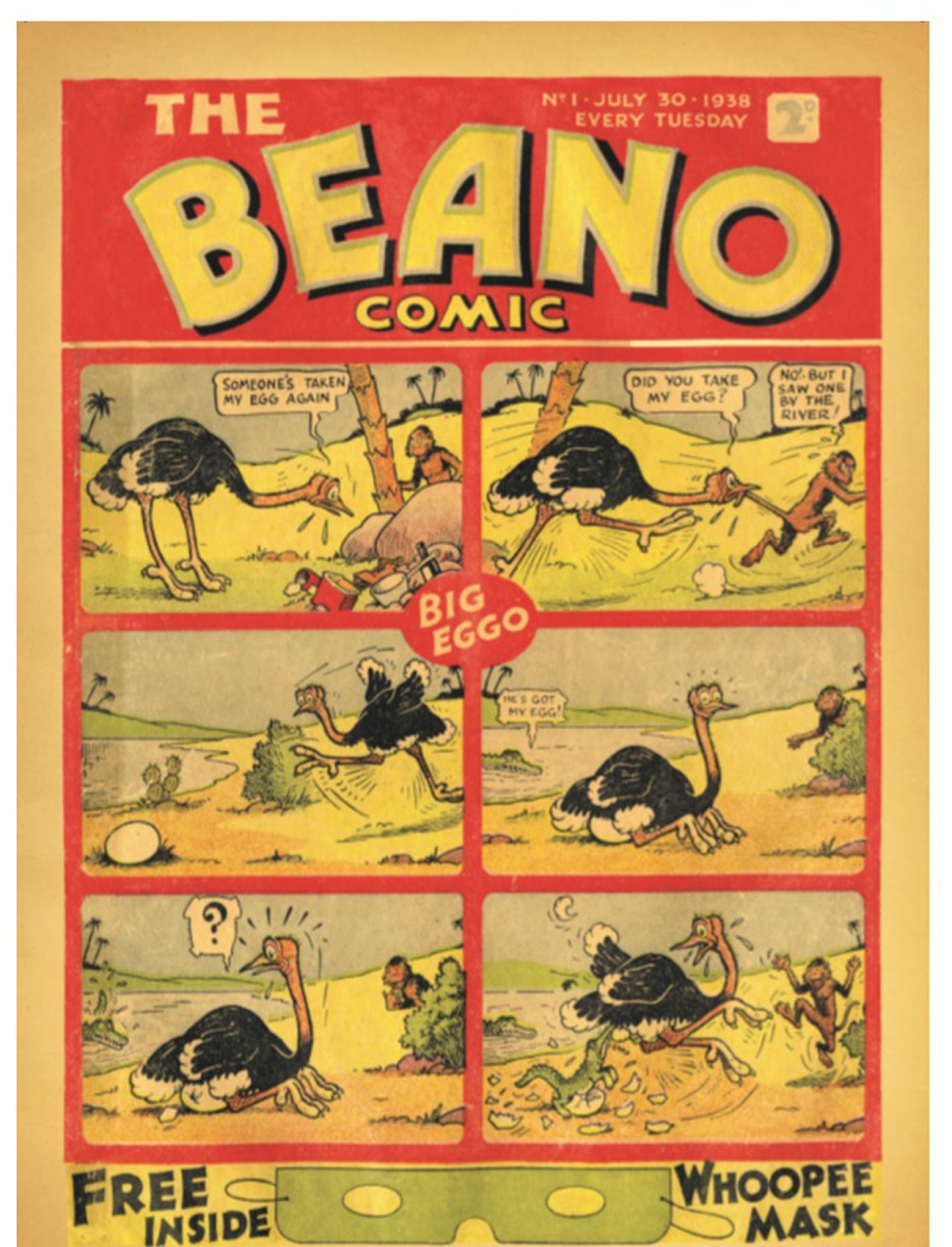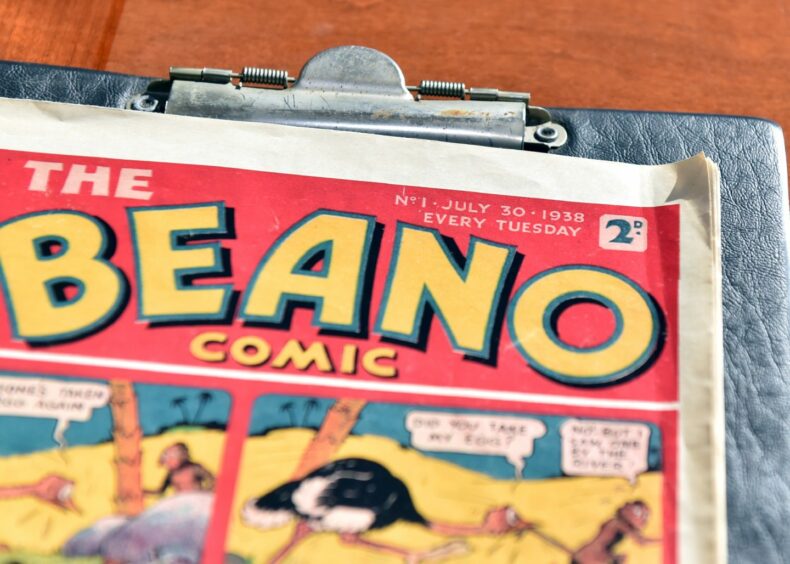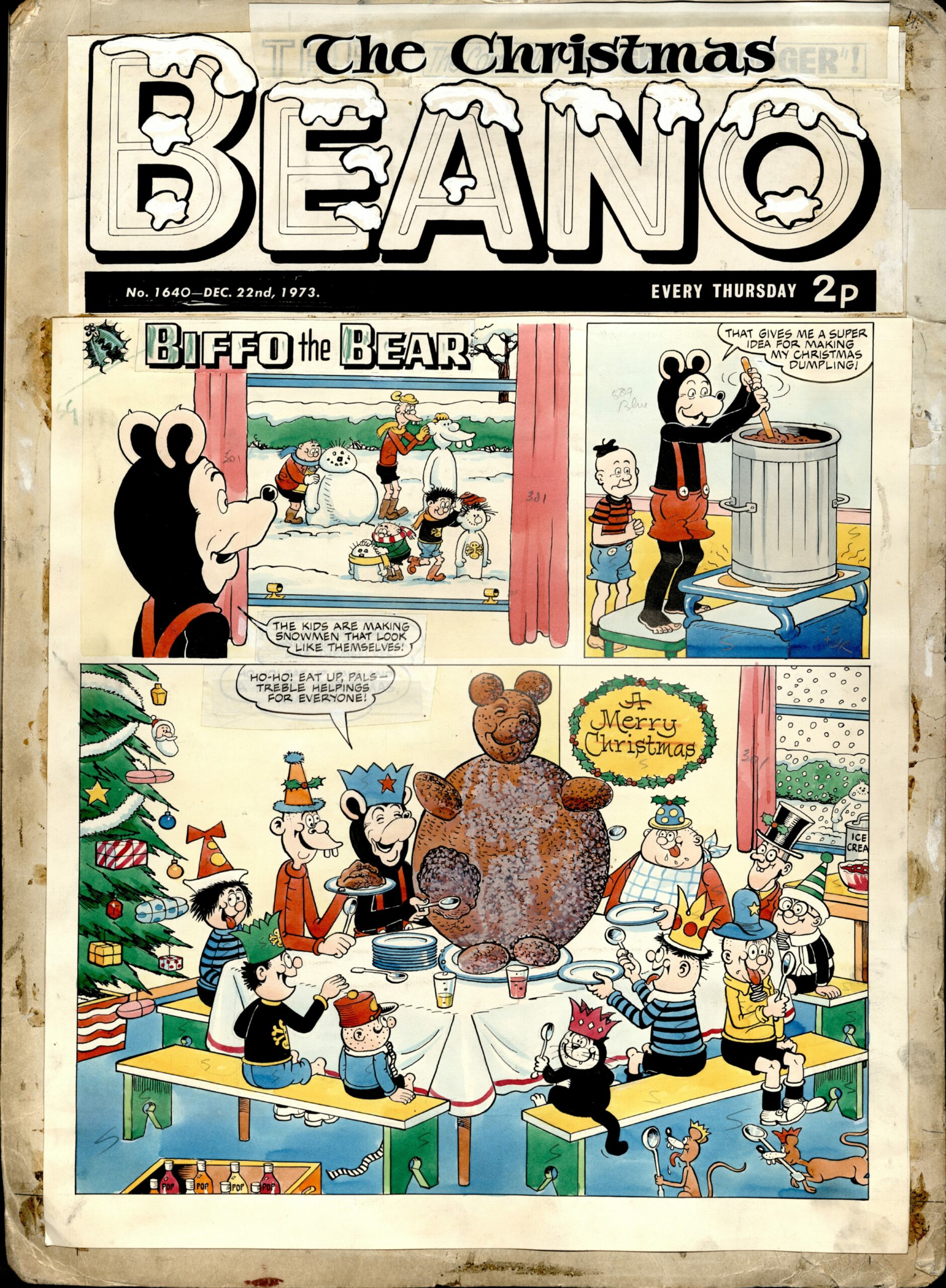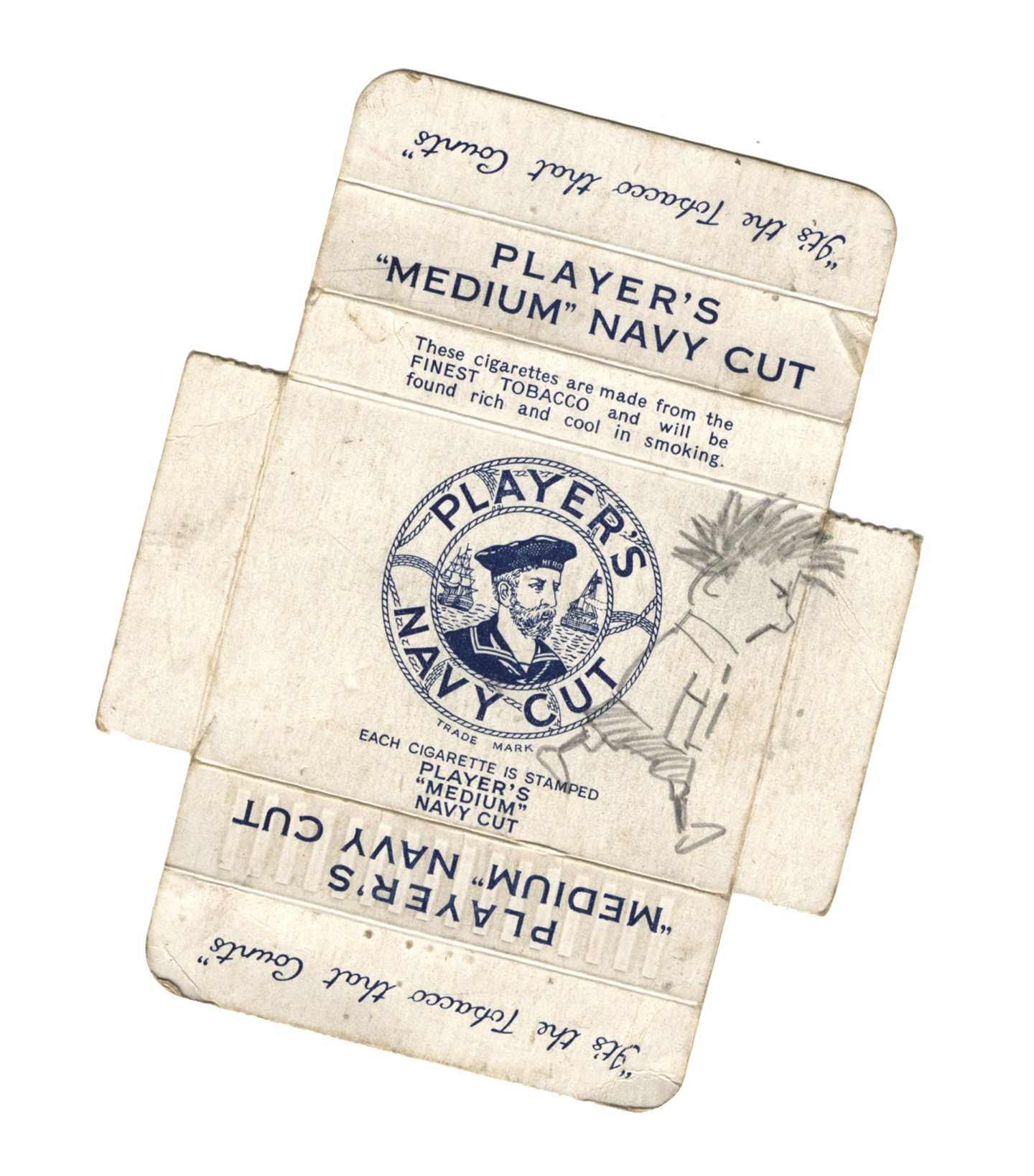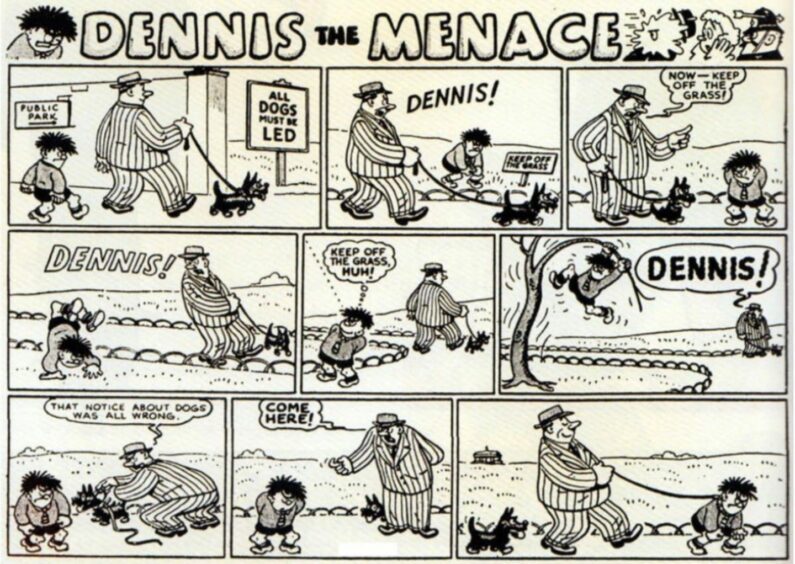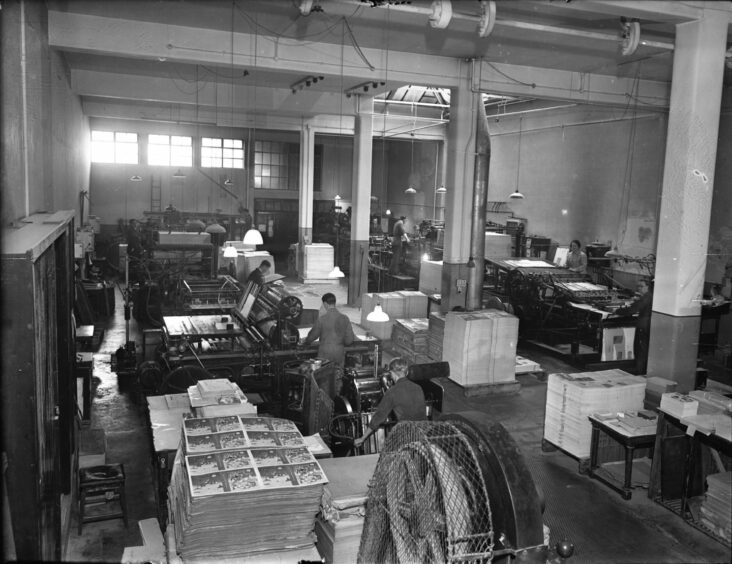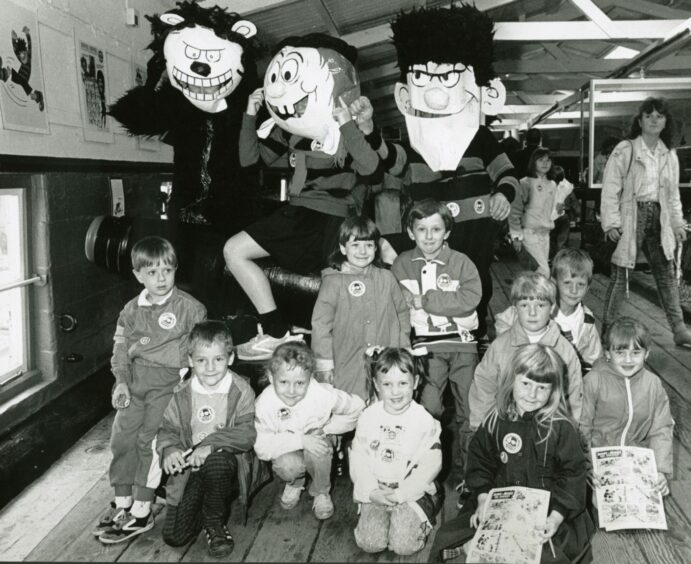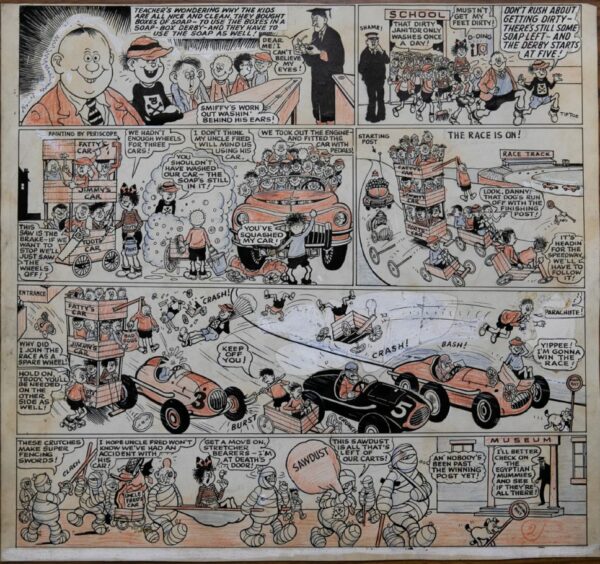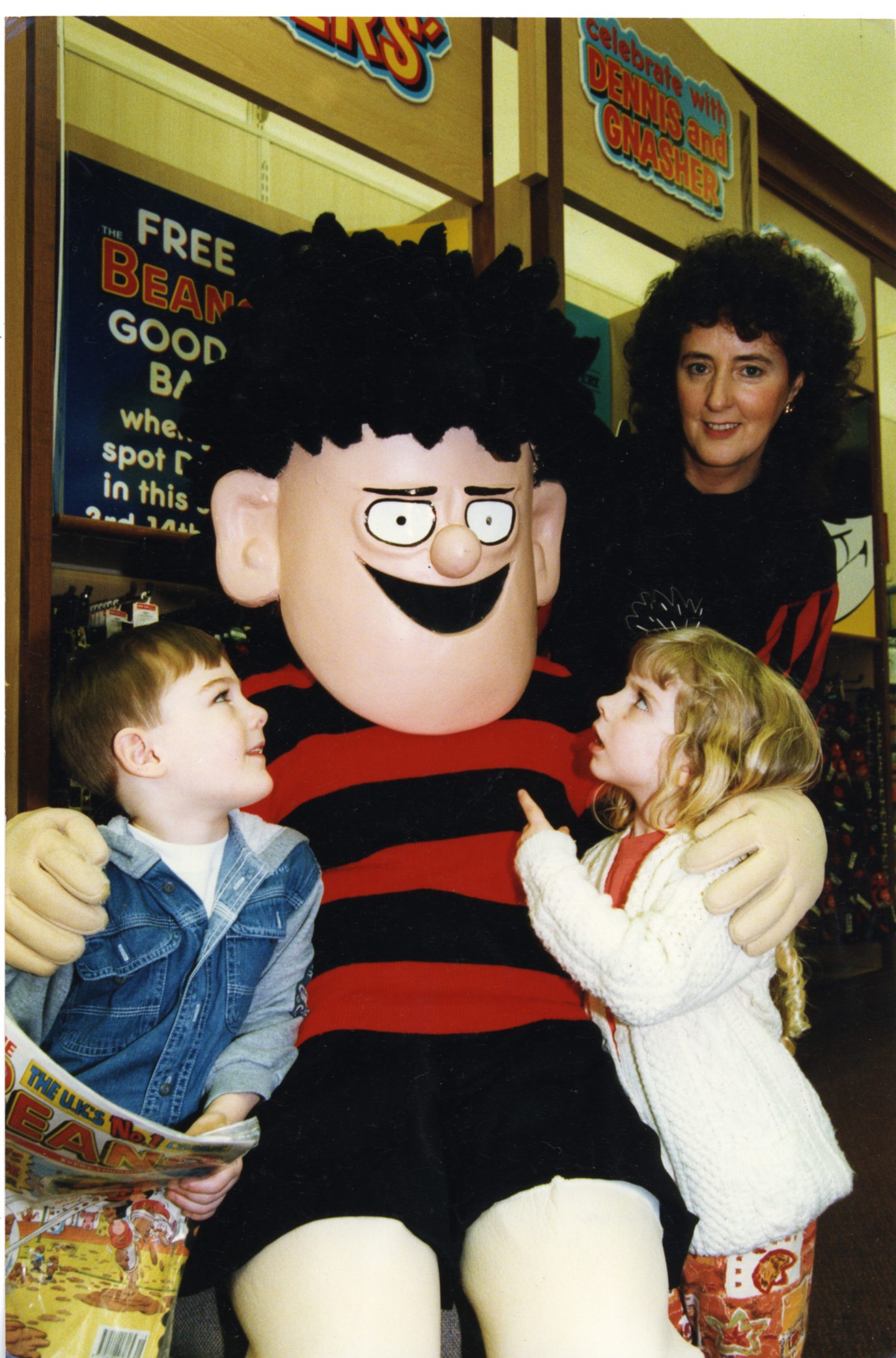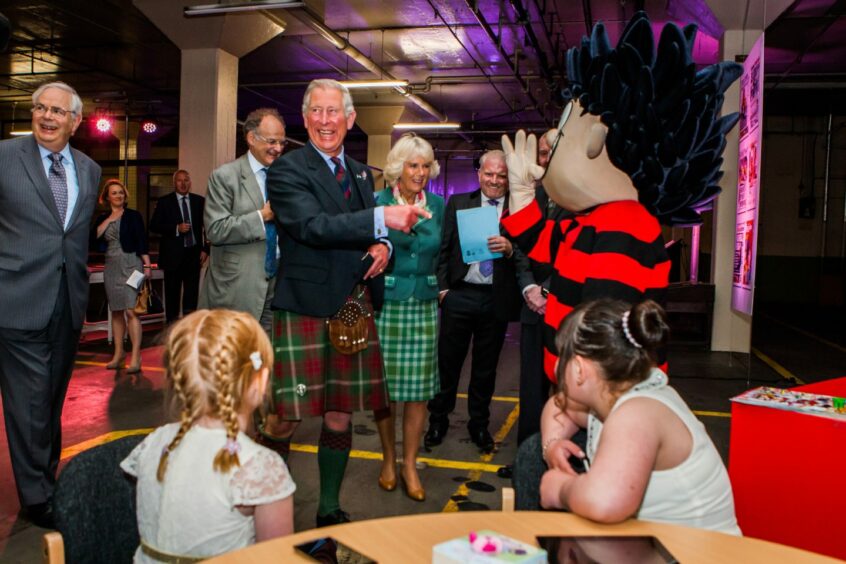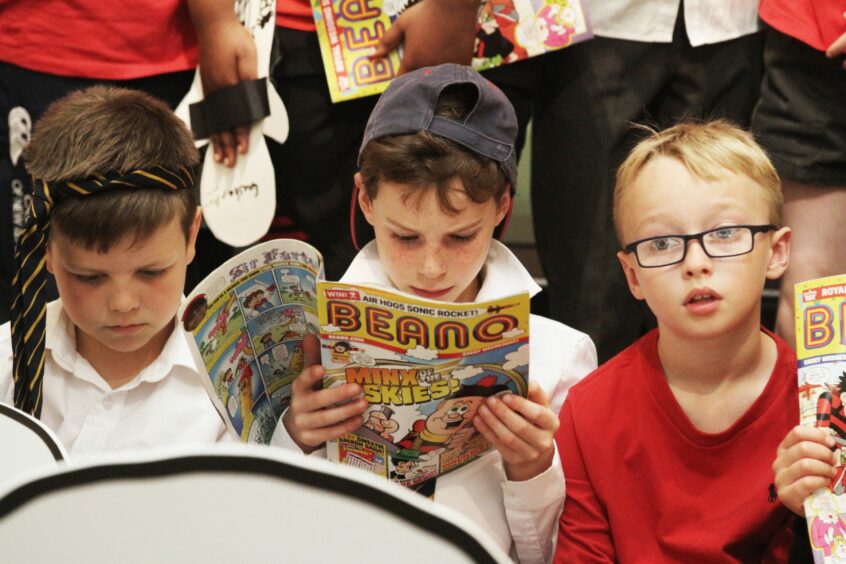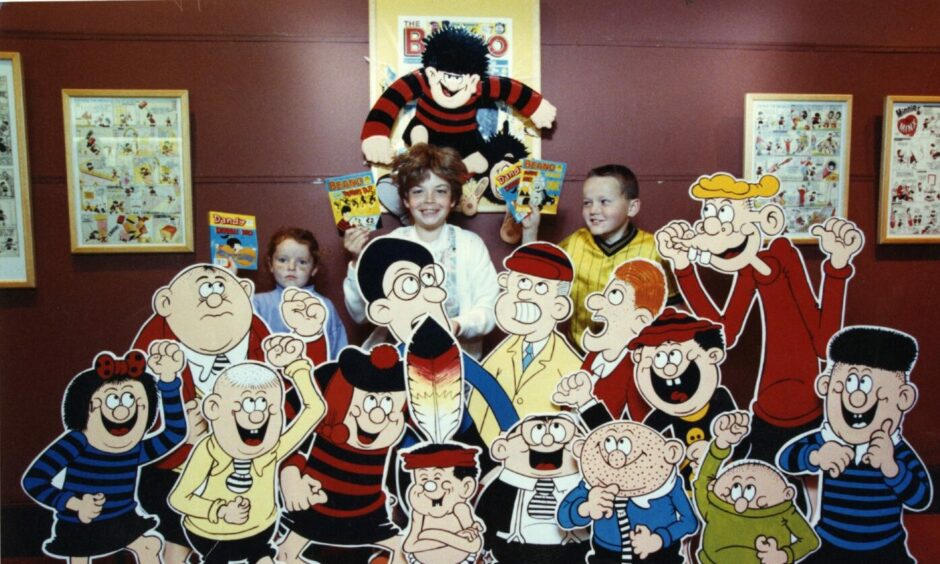
A beacon of laughter and joy pierced the gloom in the bleak days leading to the Second World War.
And it was to carry Britain’s frightened children through the conflict and beyond.
The Beano has become a beloved friend to generations of youngsters ever since.
Its success has been attributed to the appeal of much-loved characters such as Dennis the Menace, who have evolved over time to keep connecting with young readers.
Created by publisher DC Thomson in Dundee, this week sees The Beano mark its 85th year and we have opened our archives to celebrate its special connection to the city.
The first Beano featured 28 pages
DC Thomson’s first boys’ story paper was Adventure in 1921.
The success of that paper led to the publications of the Rover, the Wizard, the Vanguard and the Skipper within nine years.
Although the Vanguard was not a success, they became known as the Big Five.
The Beano was first published on July 30 1938 as a companion paper to The Dandy, which went on sale eight months earlier in December 1937.
The first Beano cost two old pennies and its 28 pages were a mix of comic strips and text tales of adventure.
Very few first issues of The Beano remain, with one selling for more than £17,000 at auction in 2015.
Legendary writers and artists clocked on at what became known as The Fun Factory to bring the cherished comic to life week after week.
The cover star was Big Eggo, an ostrich in search of his lost egg.
The troubled bird lost his front page position to Biffo the Bear in 1948.
The Beano was an instant success and by 1950 each issue sold close to two million copies.
Dennis The Menace is the longest-running character to appear in the comic.
Editor George Moonie and cartoonist Davy Law were struggling to sort out the idea for a new character so they left Dundee and went off to lunch in St Michael’s in Fife, where the first drawing was done on the back of a cigarette packet.
He made his Beano debut on March 17 1951.
The first-ever Dennis strip featured him wearing a shirt and tie while accompanying his dad on a walk in the park.
The “World’s Wildest Boy” had to wait until May 5 of that year to be given his trademark black-and-red-striped jumper.
Dennis didn’t gain his cheeky canine companion until 1968.
Gnasher was first conceived by Ian ‘Smoky’ Grey.
He was a great dog lover and was keen to give Dennis a pet, so he took Dennis’s hair and added on teeth and eyes and four legs.
In a remarkable coincidence, little-known in the UK, there were two cartoons of the same name released at the same time, with no way either of the creators could have known the other was in the works.
On March 12 1951 a Dennis the Menace cartoon also began life across 16 US newspapers about a five-year-old boy in Wichita, Kansas, called Dennis Mitchell.
His faithful companion was his dog Ruff and he liked nothing more than riding around on his skateboard or his bike.
Dennis would usually walk away and leave his long-suffering neighbour Mr Wilson clearing up the mess.
He was created by Hank Ketcham, who had a four-year-old son called Dennis, whose antics proved to be inspirational.
The main difference was that the American Dennis was created as a five-year-old, whereas the Dennis who lives in Beanotown is forever 10, enabling both to demonstrate very different types of adventures.
It’s believed that George Moonie got Dennis’s name from an old music hall song which went: “I’m Dennis the Menace from Venice”.
The early 1950s also saw the creation of Beano characters like Roger the Dodger, Minnie the Minx and The Bash Street Kids.
When it comes to The Bash Street Kids, the editorial team in DC Thomson’s Meadowside headquarters used the playground antics of the schoolchildren across the street as their inspiration.
The lovingly calamitous schoolchildren who would become known as The Bash Street Kids didn’t appear until 1954.
In its first incarnation, the comic strip was called When the Bell Rings, drawn by Leo Baxendale.
In 1956 it was renamed The Bash Street Kids.
Times may have changed but Roger is still dodging, Minnie remains the definitive Minx and Dennis is still menacing.
His irreverence and dogged desire to challenge authority figures endures.
Just ask King Charles and Queen Camilla!
The future king — plain old Prince Charles back then — had a fit of the giggles when he was pranked by the world’s naughtiest boy on a visit to Dundee in 2013.
The royal couple were greeted by cheering staff before being shown around DC Thomson’s new £25 million printing presses at its Kingsway plant.
They were introduced to three of the employees’ children – Gracie Murray, Rhys Egan and Reagan Lafferty – who presented them with framed artwork showing their upcoming appearance in a special edition of The Beano.
The comic saw the royals take a trip to Beanotown’s undisciplined Bash Street School where they gently encouraged the youngsters into better ways.
Dennis the Menace then got in on the act, refusing to shake the future king’s hand during the walkabout, and making a cheeky gesture instead that prompted a big laugh.
In 2015, the 3,800th issue of The Beano comic broke the Guinness World Record for longest-running weekly published comic.
And The Beano characters are creating their own brand of havoc on TV including the Emmy-nominated series Dennis & Gnasher: Unleashed! being aired around the world.
